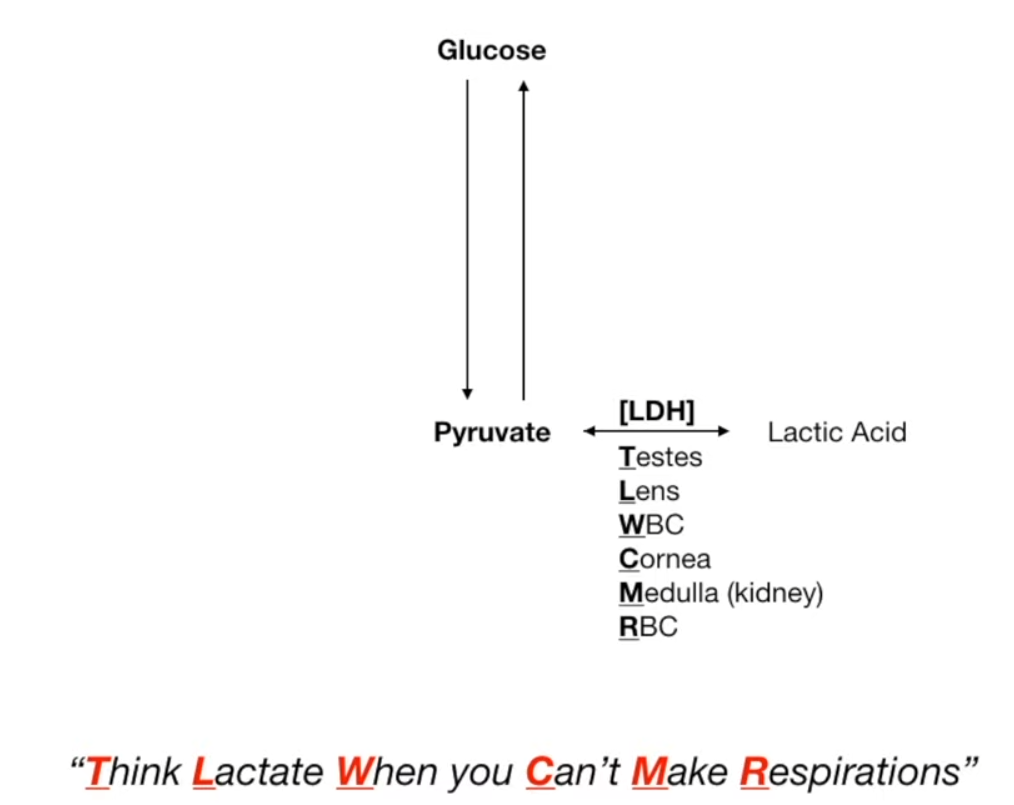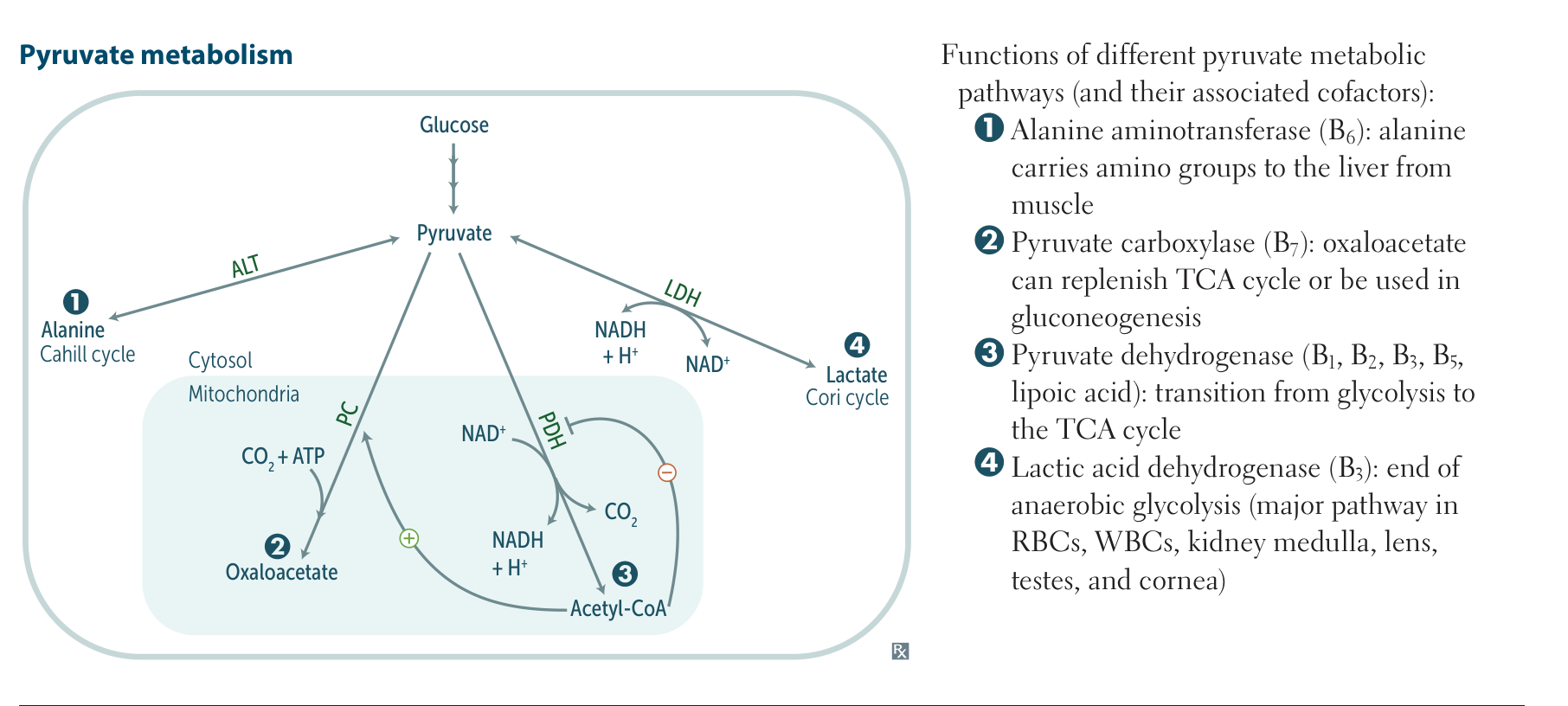| Reaction |
Pyruvate → lactate (reversible) |
Pyruvate → acetyl-CoA (irreversible) |
Pyruvate → oxaloacetate |
Pyruvate → alanine (reversible) |
|
Enzyme: lactate dehydrogenase (LDH) |
Enzyme: pyruvate dehydrogenase complex |
Enzyme: pyruvate carboxylase |
Enzyme: alanine aminotransferase (ALT) |
|
Present in heart, RBCs, muscle |
Produces CO2, NADH+ + H+ |
Requires biotin (vitamin B7), CO2, and ATP |
Requires pyridoxal phosphate (active form of vitamin B6) |
|
Occurs in anaerobic glycolysis |
|
|
Occurs in states of muscle breakdown (catabolism) |
| Location |
Cytosol |
Mitochondrion |
Mitochondrion |
Cytosol of myocytes |
| Function |
Lactic acid cycle (Cori cycle), lactate is released during anaerobic glycolysis |
Acetyl-CoA enters the TCA cycle, ketogenesis, fatty acid synthesis |
Intermediate for TCA cycle and gluconeogenesis |
Alanine transports amino groups (from protein degradation) and carbons to the liver for gluconeogenesis (Cahill cycle) |
|
Lactate is used for gluconeogenesis in heart and kidney |
|
|
Liver converts alanine back into pyruvate, urea is a byproduct |
|
NAD+ is replenished in anaerobic states by lactate formation |
|
|
|
| Stimulated by |
↑ NADH/NAD+ ratio, anaerobic states (e.g., exercise), breakdown of ethanol |
↑ ADP, ↓ NADH/NAD+ ratio, ↑ Ca2+ |
Acetyl-CoA |
High protein intake, fasting, cortisol, epinephrine, and glucagon |
| Inhibited by |
High lactate concentrations (feedback inhibition) |
↑ Acetyl-CoA/CoA ratio, ↑ NADH/NAD+ ratio, ↑ ATP/ADP ratio |
|
|

